In this digital day and age, many photographic artists are staying true to the medium's roots with traditional black and white film photography. Clyde Butcher and Ted Preuss are two such artists.
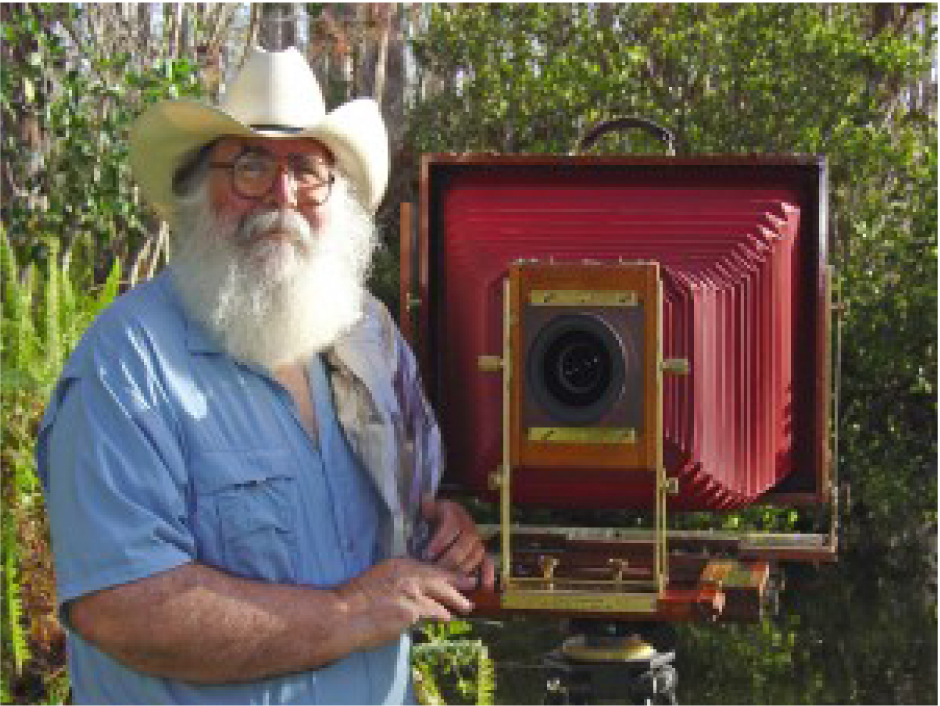 Clyde Butcher |
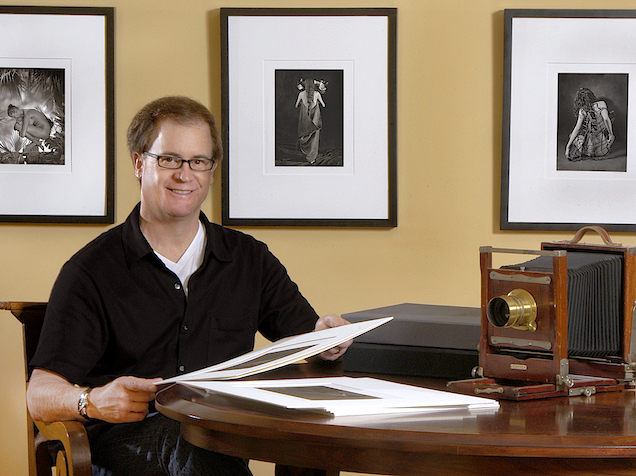 Ted Preuss |
Butcher, who uses a variety of large format view cameras and enlargers to achieve his dramatic and highly detailed photographs of nature, prints on silver gelatin paper. Ted Preuss uses the tried-and-true platinum/palladium print process, which produces rich tones and a vintage feel, and suits his work perfectly. He labels the work as a "hand coated platinum palladium print" versus a "platinum print" to distinguish his process from an inkjet printing paper with the same name. "'Platinum' is a trade name for an inkjet paper," he said. "I don't want people to think that my photos are inkjet prints, because platinum/palladium is the most archival process that exists."
A frequent misconception among people getting into photography is that digital is cheaper, simply due to the fact that film and image processing are taken out of the equation. Some argue that digital advancements have made the practice of photography easier to learn and the images easier to manipulate, but it hasn't necessarily made it less costly. Professional photographers working with digital cameras require a PC and high quality printing equipment, as well as editing software. Although film photographers face the expense of enlargers and chemicals, the cost of high tech equipment can easily outweigh the cost of film photography. Additionally, film cameras are generally less expensive, and will not become obsolete in a few short years. Butcher and Preuss use both modern and antique cameras, lenses, and enlargers (some of which are over a century old!) to achieve their artistic visions.
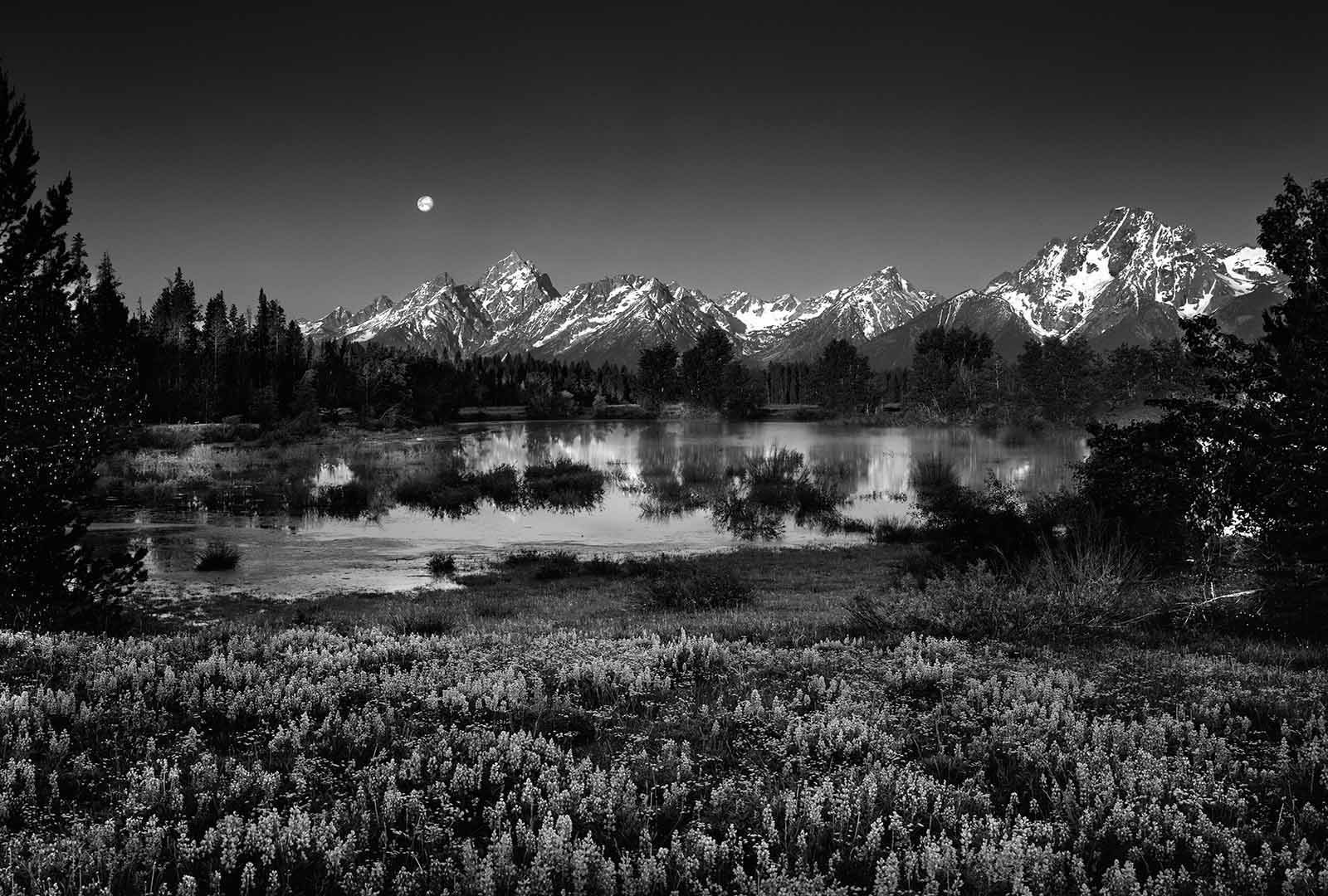
Butcher - Moon Over Tetons - Wyoming
"With digital photography, you need an external hard drive, and you have to back it up constantly," Preuss said. "Data rot can corrupt the files over time if they are not continuously updated. I enjoy having the actual negative." While most people will experience a computer crash in their lifetime, it's much less likely for a house fire or theft to cause a photographer to lose all of his or her work. Preuss prevents those things from being potential problems by storing his negatives in a safe deposit box at the bank. Some photographers cut up their negatives or burn them, but Preuss has been pondering more creative ways of preventing them from being re-printed, while preserving the artifact. One such idea is to set them in a thick acrylic or resin, so that it could be saved without allowing for additional prints to be made. Preuss' innovative ideas do not stop there. He has used the platinum/palladium process to print onto the skeleton of leaves, creating a fascinating juxtaposition of imagery.
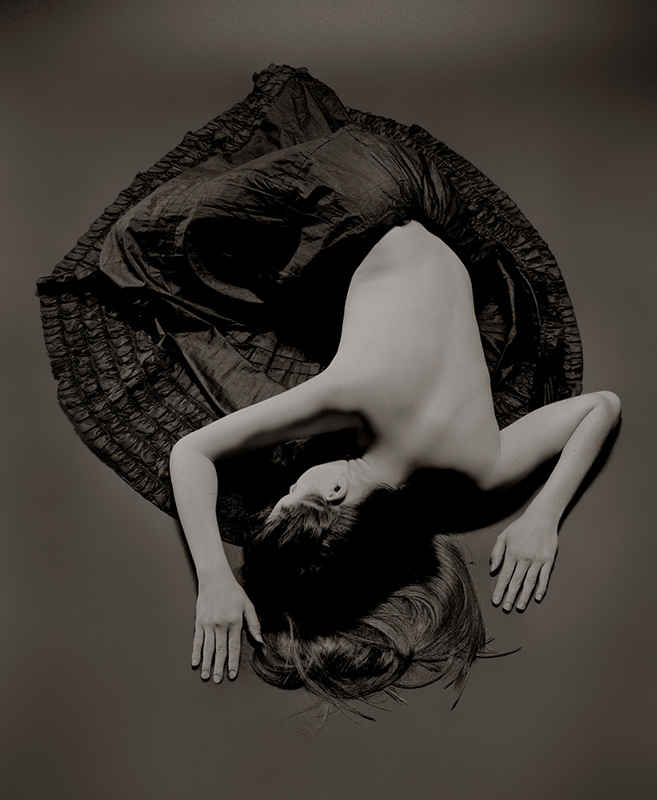
Preuss - Tranquil
Preuss got his start in architectural photography, but began photographing the human form after he began attending art gallery events. "I was going to these shows, seeing crazy images depicting women. I thought to myself, "This is really bad." I wanted to go back to classical photography, and my experience in architecture made me want to concentrate on the lines of the form. I didn't really study photography, or even art, I had never photographed people before I began this series. I started really focusing on it in 2003, and got very motivated in 2006." Preuss shared a story from when he was living in Hyde Park, in the elevator of his building with one of his freshly printed portraits in his hand. "There was a Sotheby's employee in the elevator, going to appraise my neighbor's artwork. I had the photo in my hands, and he glanced over and said, 'Whoa! Is that photograph from the 1880s?' I said, 'No, it's from five minutes ago.' It was then that I knew I had something," he recalls.
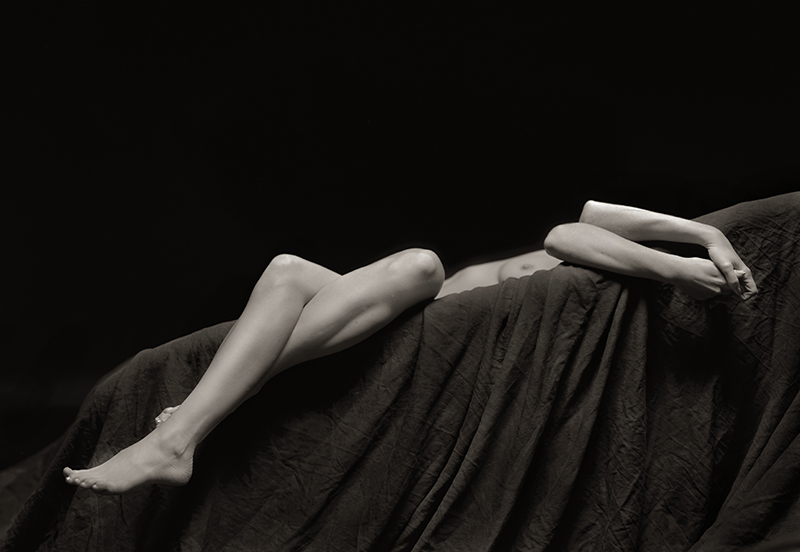
Preuss - Twiddle
Preuss believes that film photography gives a wider range of tones and is more archival, and he enjoys the process of developing the film and images. "For me, the most exciting part of the process is not knowing what I have until I'm processing in the darkroom, then turning on the lights and seeing the negative. I love watching the image develop in the tray." Although he does own a digital camera, it is used only in the preliminary stages of his shoots. "In the past, I used a Polaroid camera to set my shots up- to get the lighting and angle right. Since Polaroid is no longer, I now proof my images with a digital camera," he said.
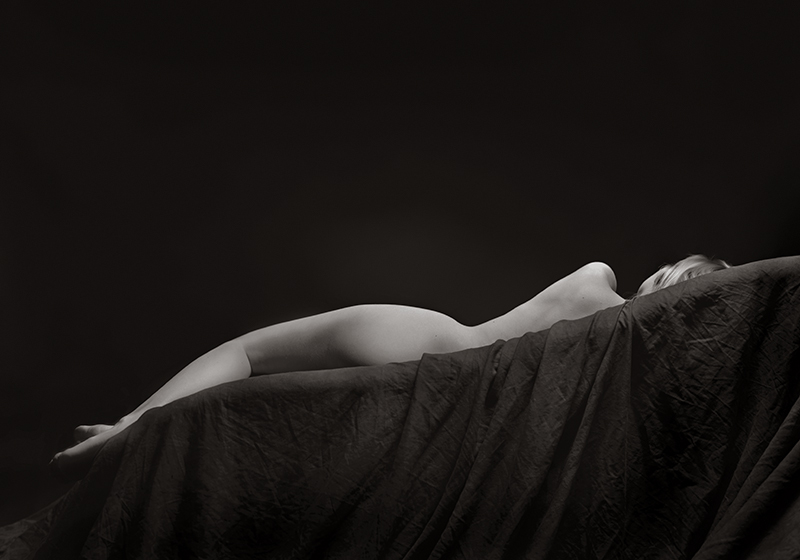
Preuss - Viola
Preuss is proficient in Photoshop, but he does not use it for his artwork. In fact, his images are not manipulated with an enlarger, either. The platinum/palladium process requires ultraviolet light, so dodging and burning are not possible. His images are "straight from the negative," he said. Despite the fact that his work is rooted in long-established photographic practice, he does not snub his nose at what digital photographers are doing these days. "When I purchase other people's work, it's usually traditional black and white film, but I like to keep an open mind- I enjoy seeing what digital photographers are able to do with their medium, and I like learning why the person decided to go in the direction he or she did. There are a lot of things you can do with digital that you can't do with film, and I find it all very interesting."
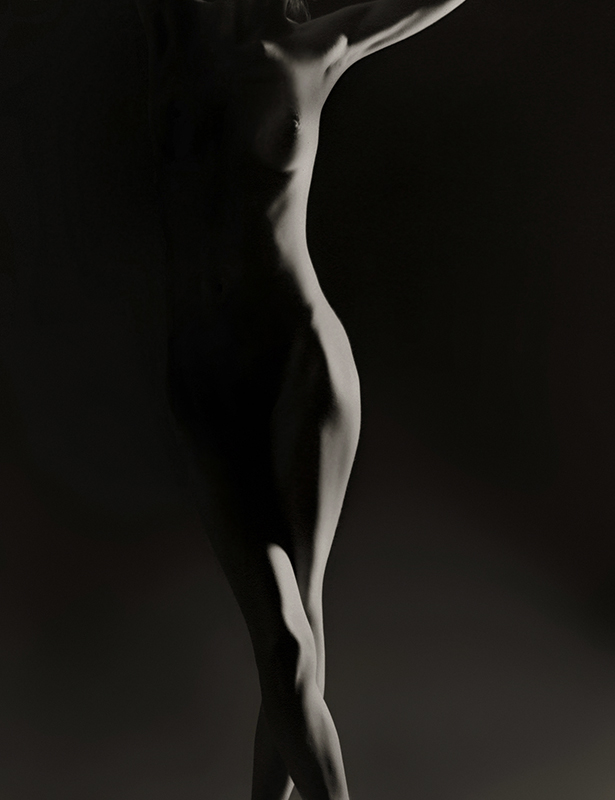
Preuss - Virtue
It has been suggested that the best way to learn about photography and the way the camera works is by shooting with film, because it means that one is forced to "go back to basics," learning how to altering the shutter speed and aperture. Some say it helps to force the photographer to think more about each photo he or she is capturing… there isn't an almost limitless number of photos to snap and then simply upload to a PC. Not wanting to waste money on film and developing makes for a more careful and thoughtful photographer. Some say that digital photography has diluted the medium by allowing amateurs with cameras to easily take photographs. Preuss said that he has had photographer friends make this point in the past, but he believes that there are a lot of innovative things that have resulted from the digital revolution. "Everyone has different tastes," he stated. "The creativity that comes out of it is really up to the viewer."
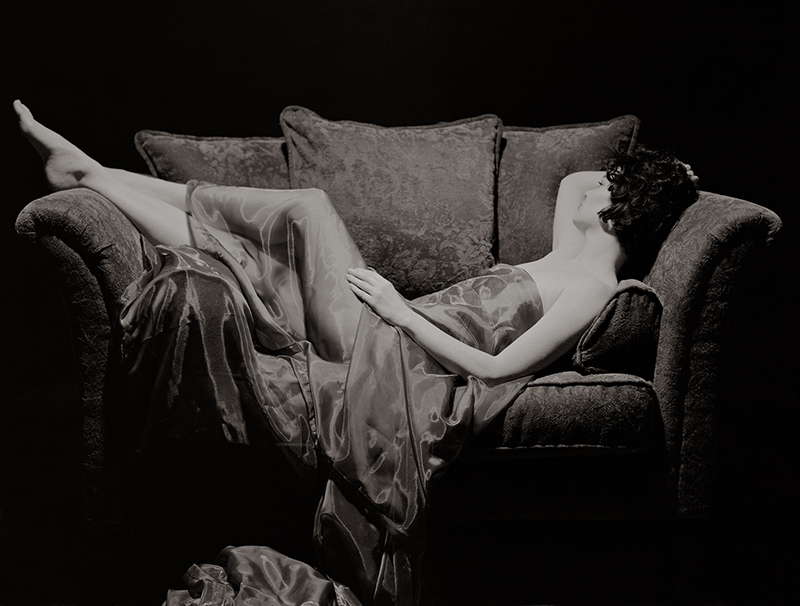
Preuss - Recline
Butcher believes that digital photography is a great tool, but doesn't hold much regard for it as a everlasting art form. "You can't make a permanent art print with a digital printer. If you put a digital print outside and put a quarter on it, after awhile, you're going to see a circle on the print. The only permanent art form in photography is black and white- if you want it to be around for the next 100 years. We don't know what will happen to the digital emulsions yet. Film and silver prints have been around for over 100 years, and we [black and white film photographers] pretty much know what we're doing." He doesn't, however, believe that digital photography is "less pure" of an art form than film due to the ability to heavily manipulate the image. "I think it's great. You can manipulate anything- Jerry Uelsmann has manipulated silver prints since the 1960s. Who cares? It's fun. And digital photography has brought the medium back to the masses. iPhones are amazing, I've got 100 megabyte digital images that I can make 80 inch prints from. And when you're capturing digital images of birds and animals, you'll never run out of shots," he said.
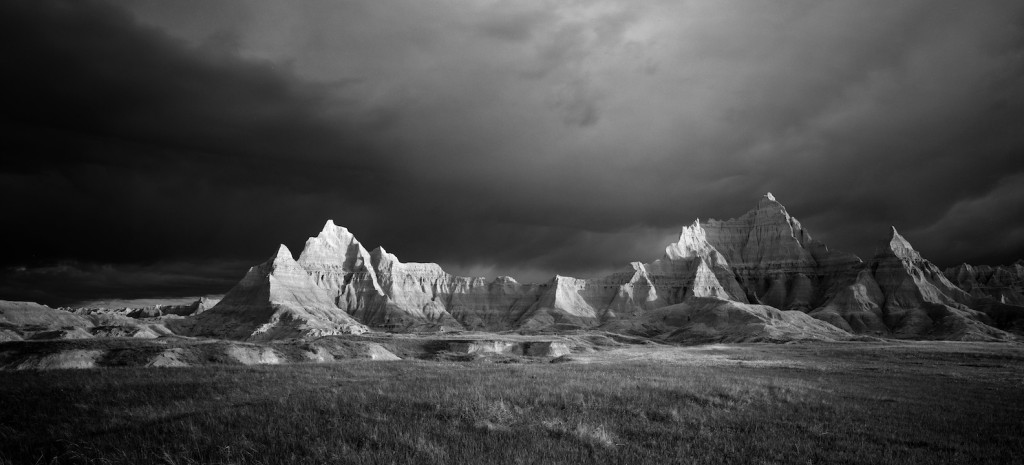
Butcher - Badlands
Shooting with a large format camera allows Butcher to make extremely large prints (up to 5 x 9 feet!) that have incredible depth and detail. On the other hand, large format cameras necessitate lengthy exposure times and expensive film, and require him to trek through swamps and woods with heavy equipment. In addition, dealing with unpredictable weather conditions can be frustrating. Butcher once spent five days, sunup to sundown, to capture a successful image. "Sometimes, you get halfway through an eight minute exposure, and the wind picks up and you have to start over. Out west, it's not as bad. The rocks don't move much! And if they do, you'd better leave," he joked.
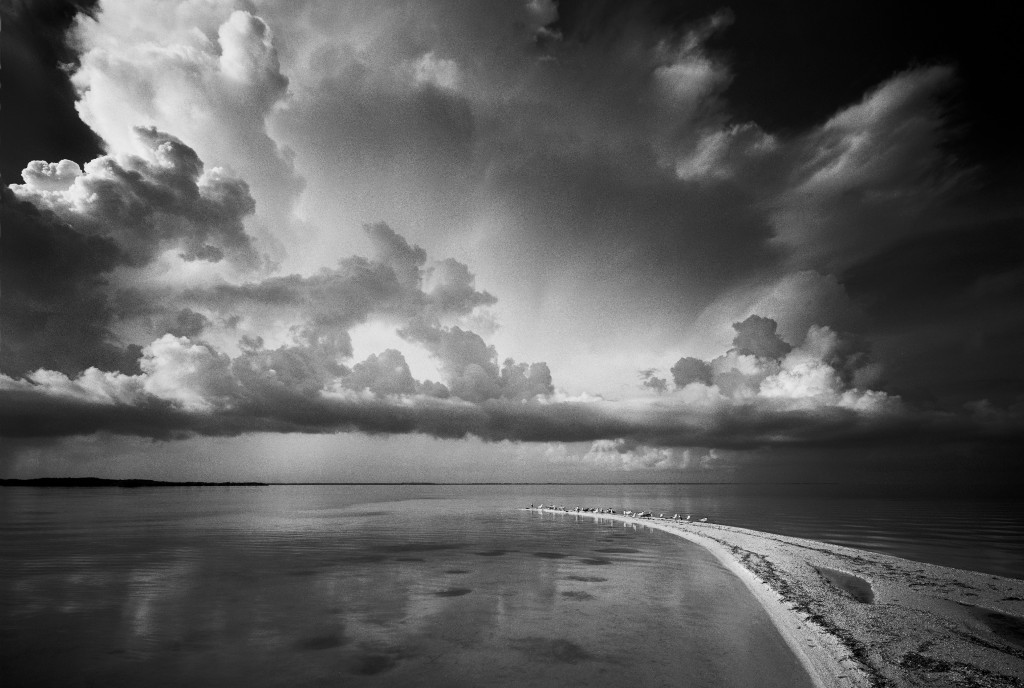
Butcher - Little Butternut Key
When composing an image, Butcher strives to achieve a balance- yin and yang, soft and hard, male and female. "I look for spaces, because I'm an architect by trade. I create spaces in architecture, so I create spaces in nature also." He has a hard time describing what, specifically, inspires him to take a photograph, because it has become second nature. "If it feels good, I photograph it," he said. When differentiating an average shot from a great shot, he said that composition, lighting, and texture all come into play, but that mostly it has to reach the viewer on a personal level. "When people look at and go, 'Oooh, ahhh' … basically it has to hit somebody in the heart, and then it's successful." The photographer is proud of the fact that his work has made an impact on the people of Florida, and their attitudes toward the state. "I'm really into the outdoors, and I love being able to bring that to other people. Particularly in Florida, it's difficult for people to access many of these areas. There aren't a lot of trails here, so you basically have to trudge through woods and swamp, which most people don't want to do because of a fear of snakes, alligators, and ticks. So for me, it's about being able to bring nature to the masses, and making the people of Florida proud of their state for reasons other than Disney and theme parks."
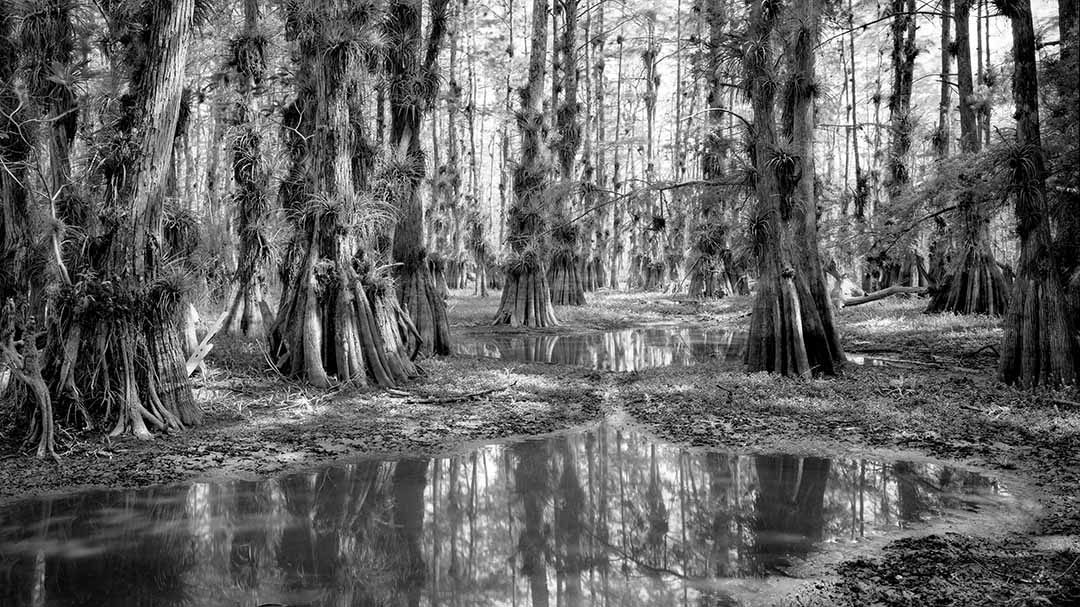
Butcher - Gator Hook
The message Butcher strives to spread is simply that the world is a beautiful place. His work does not contain symbolism, he simply attempts to take photos of places that have not been manipulated by man. "Many people don't understand the importance in their daily lives that nature provides them. They assume they have air to breathe and water to drink. People in the modern age make a lot of assumptions. It's a hard sell sometimes, but I try to put it out there that it's a pretty world out there, and it would be nice to have it around for awhile… hopefully people will understand."
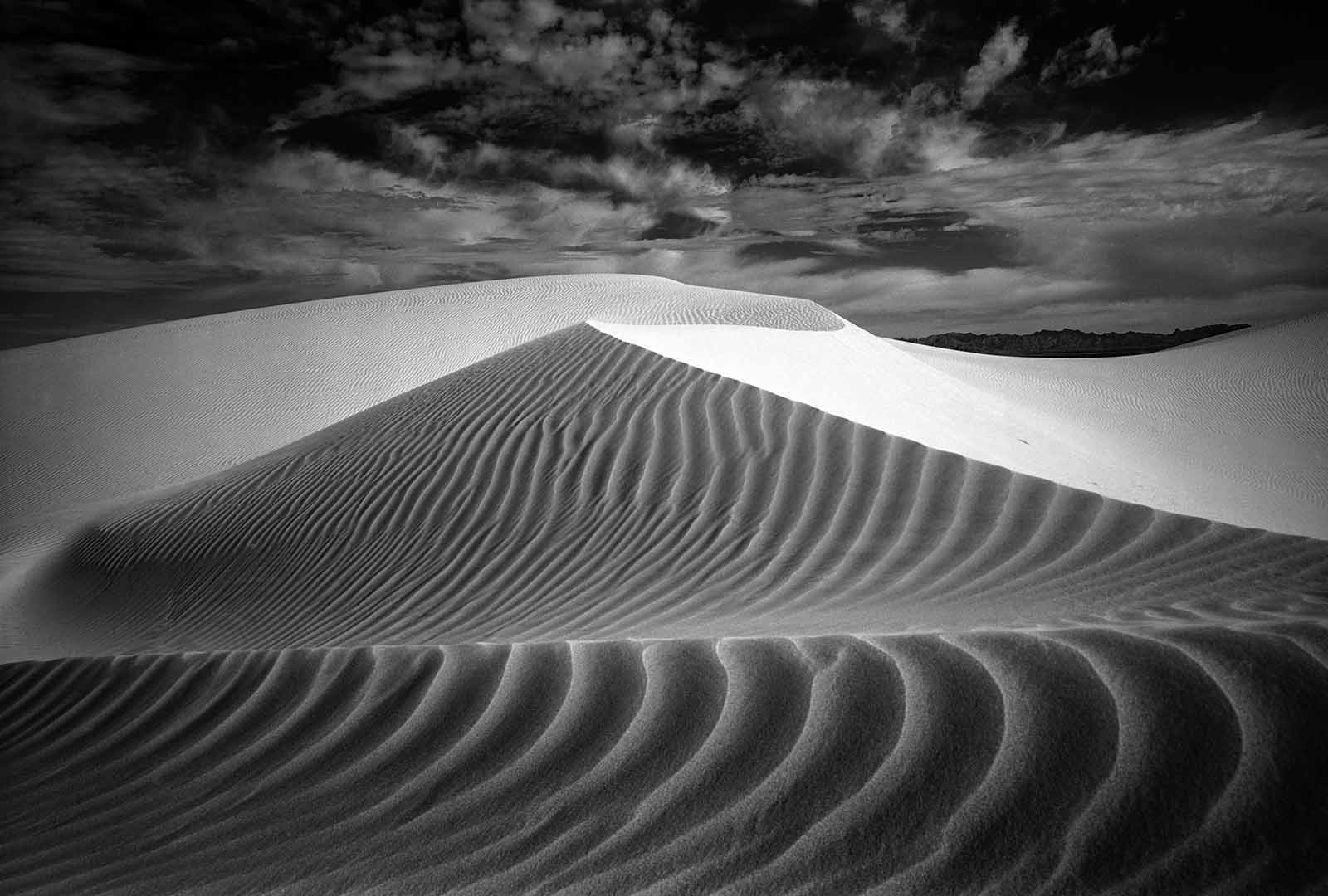
Butcher - Glamis Sand Dune California
















